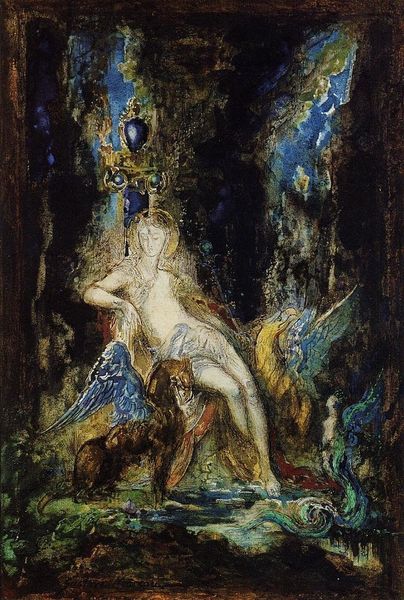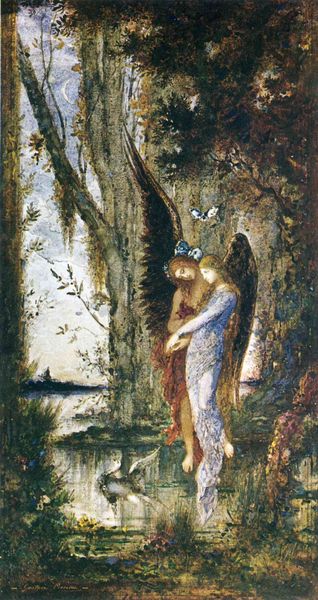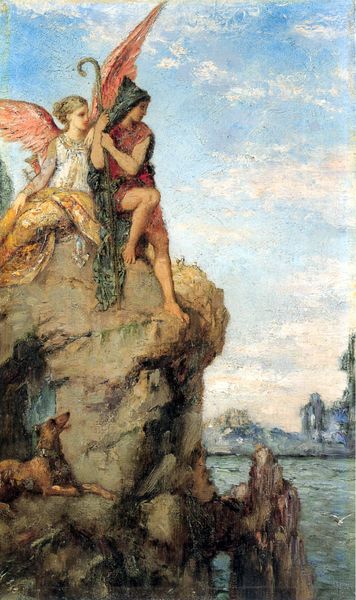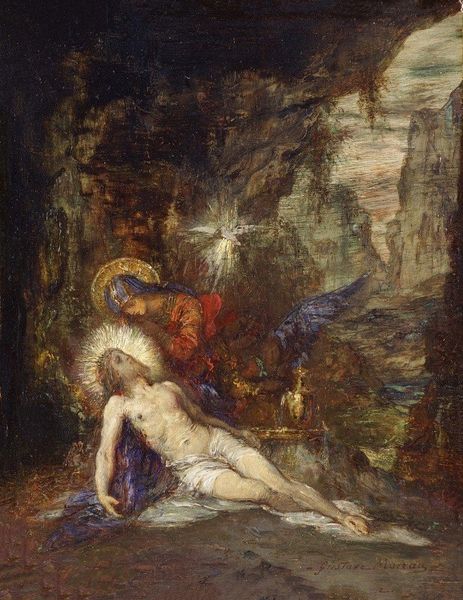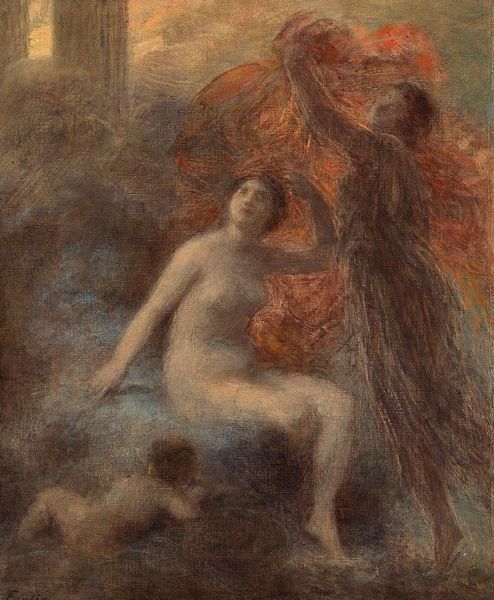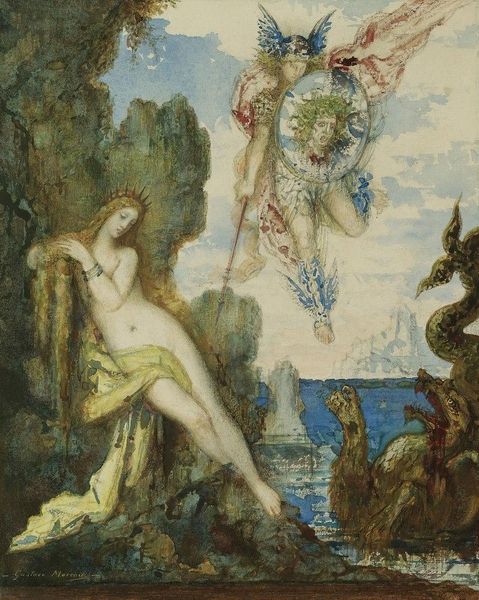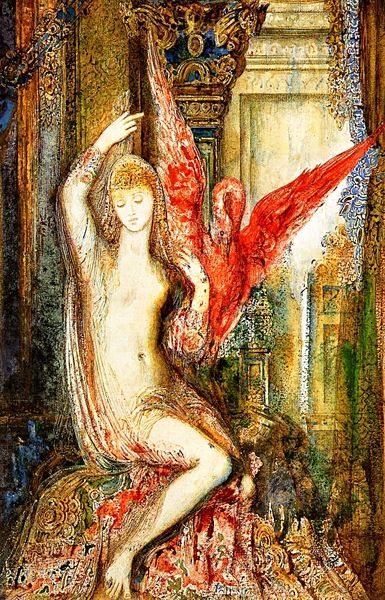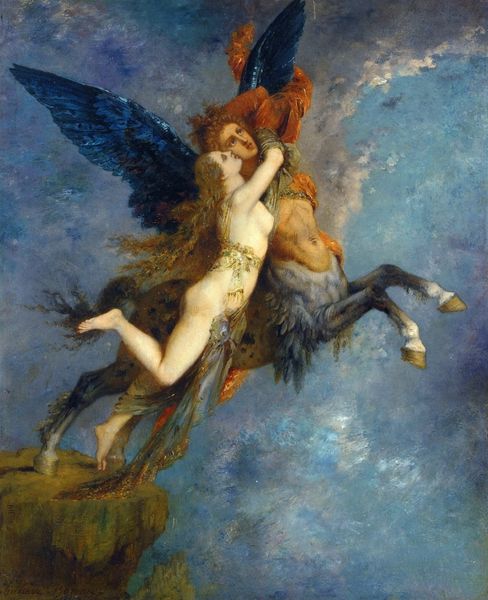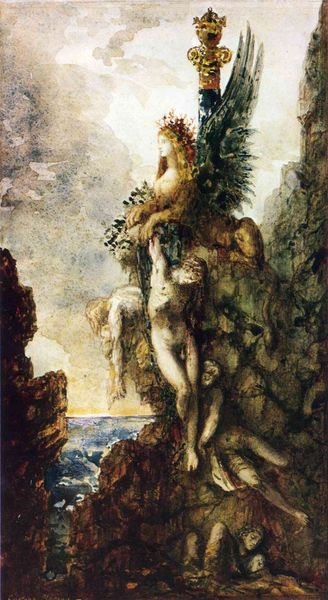
Copyright: Public domain
Curator: Looking at Gustave Moreau’s “The Raising of Ganymede,” painted in 1886, one immediately notices the dreamlike quality. There is a softness, almost like a watercolour. Editor: Yes, it has a shimmering, otherworldly feel. The first thing I notice is the sharp contrast between the darkness of the woods below and the luminous figure of Ganymede borne aloft by the eagle. I am curious as to how it functions within its original art market? Curator: The context is vital, certainly. Moreau operated in a Paris consumed with academic history painting, and rapidly evolving aesthetic and industrial concerns, but deliberately turned towards mythological subjects. It would have been received as a powerful statement in his personal Symbolist language, steeped in a revival of allegory during a politically charged time. Editor: Indeed. There is the almost violent thrust upwards against a relatively muted palette; that tension is really striking, isn’t it? And look at the materials he has chosen; the blending of the oil paint allows for light to be a kind of a material element here. The choice certainly underlines the importance of craft here. Curator: He seems very interested in myth, and, importantly, how that can carry emotional weight in the political realities of the day. Here the reference is overtly homoerotic – Ganymede was taken by Zeus to be his cupbearer, but that initial kidnapping... it's quite a complex social undercurrent, and I'd venture to suggest one Moreau knew was both controversial and powerful in subject matter. The art world of the time was not monolithic in the way some historical accounts often assume, and was still capable of challenging the social mores via representation. Editor: What are your views about the original patron? How would it have operated? Curator: As this artwork is located in a private collection, its complete social and exhibition history isn't widely known. However, if we accept that the collector or first commissioner had knowledge of Moreau's earlier works – and many patrons would certainly do their homework! – there may have been a definite expectation, an understanding, about the artistic politics in the content and medium. That knowledge can inform the entire viewing of the work, as both private indulgence and public statement. Editor: I see what you mean about both statement and knowledge in play. Thank you, it’s shifted how I’ve been seeing it entirely.
Comments
No comments
Be the first to comment and join the conversation on the ultimate creative platform.
